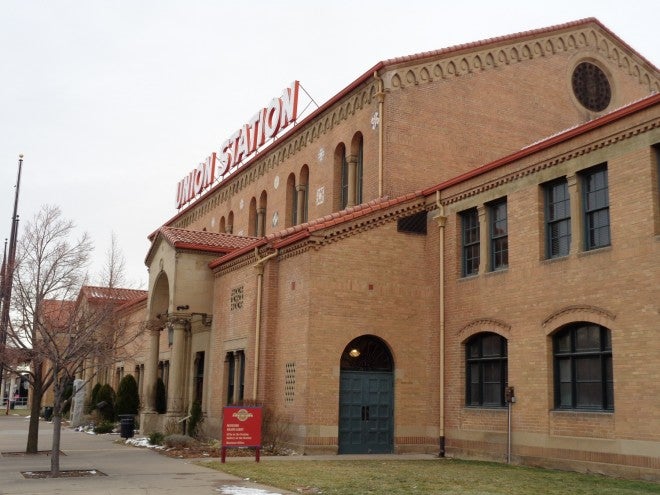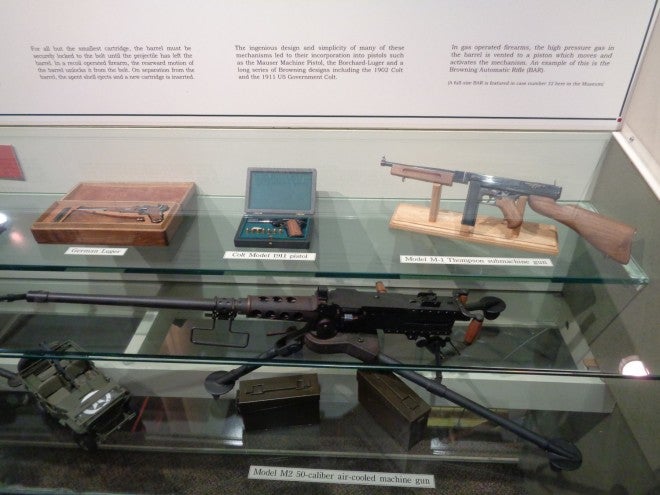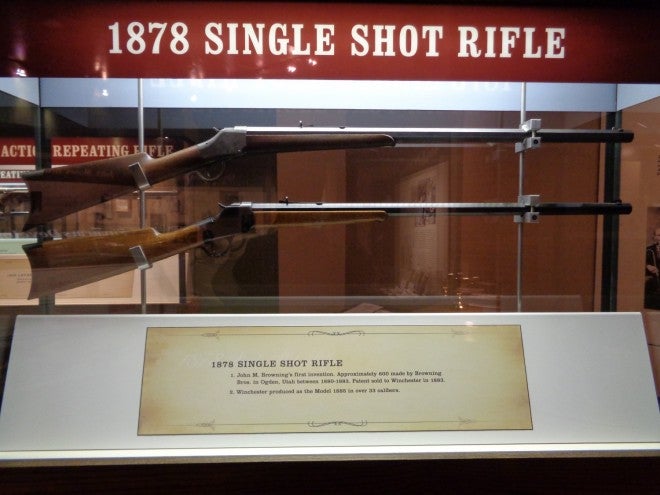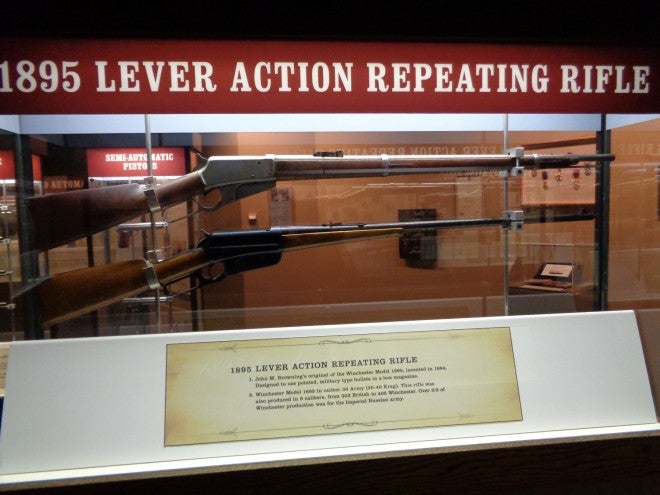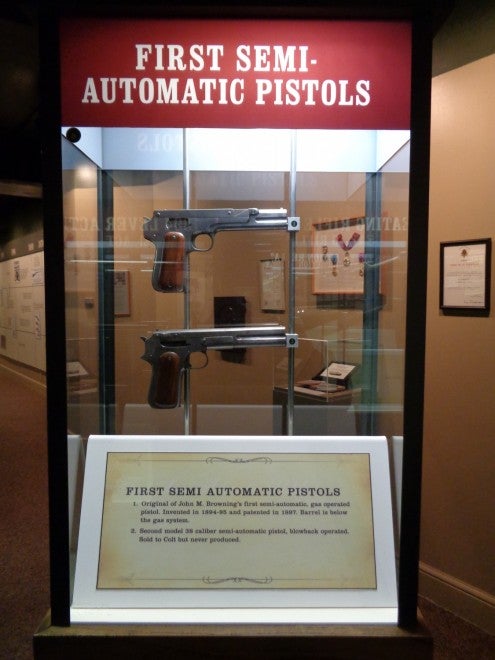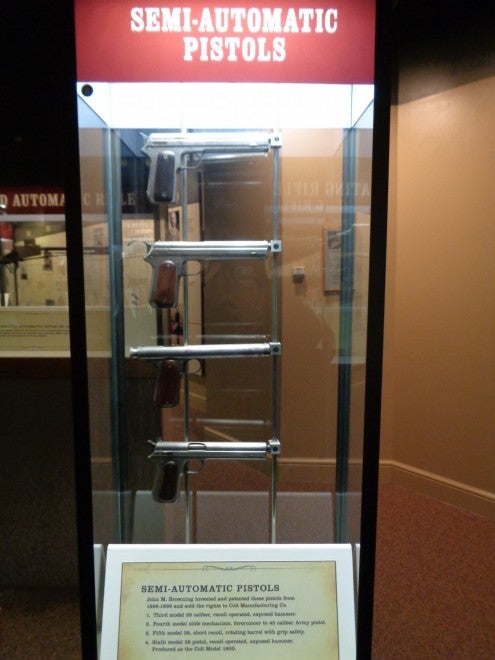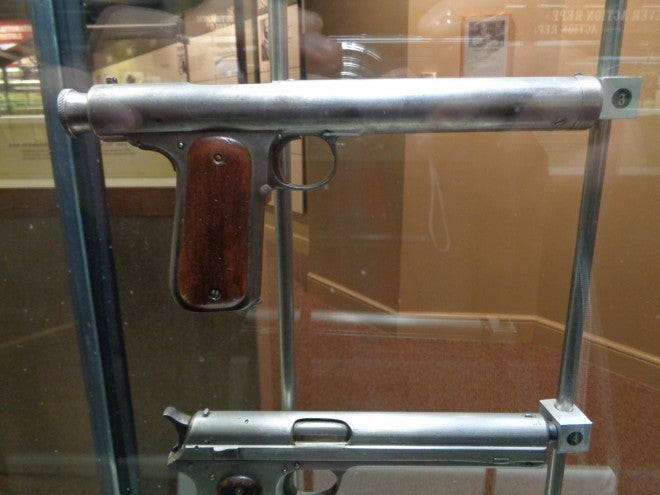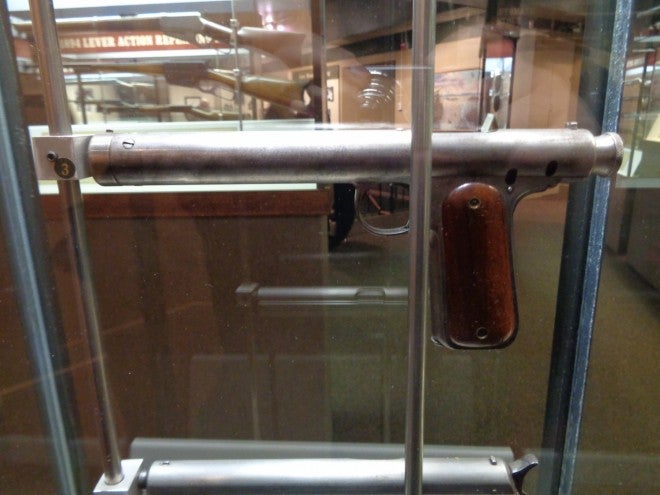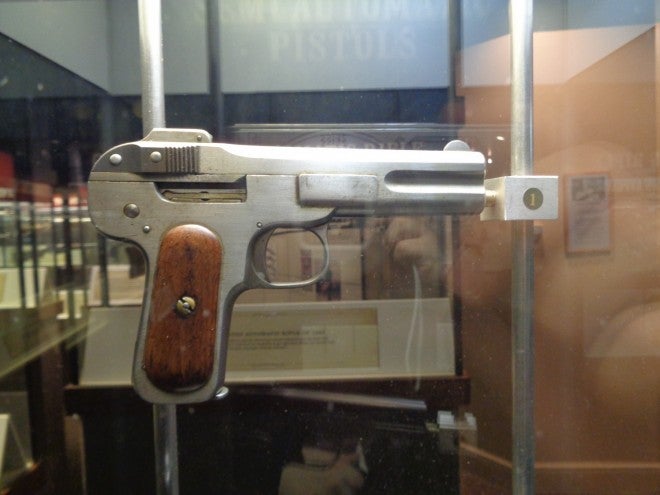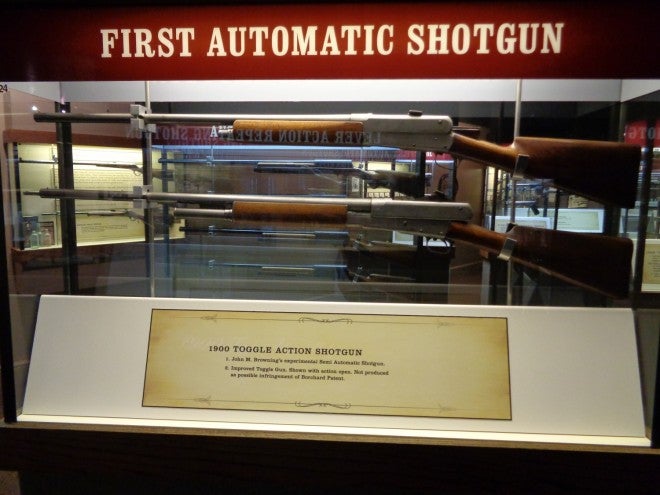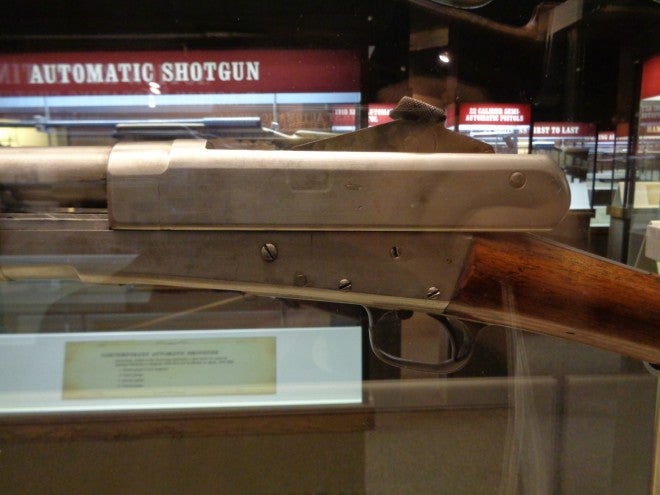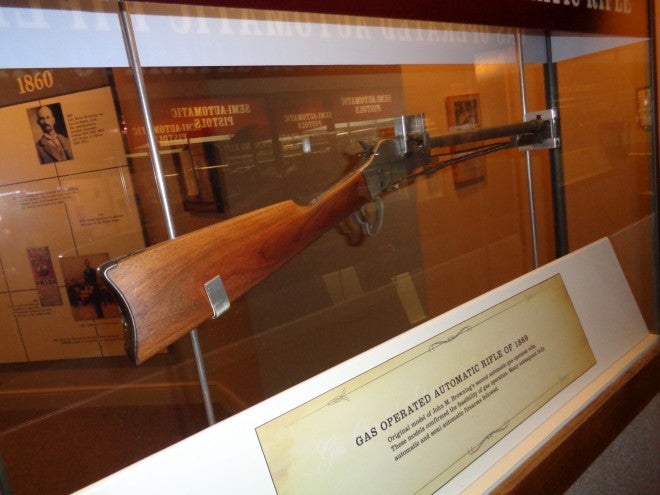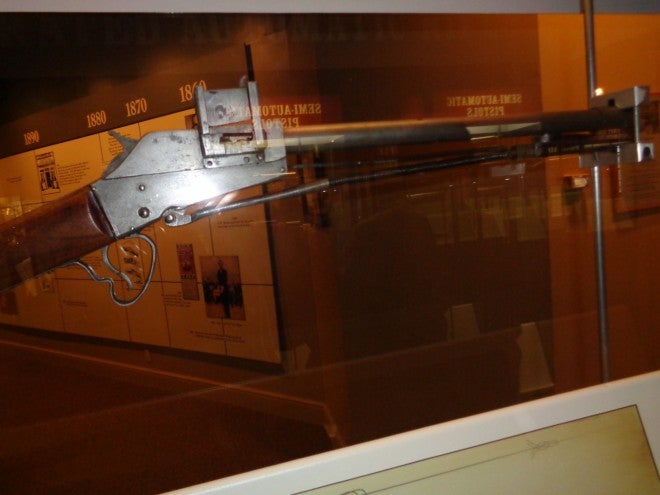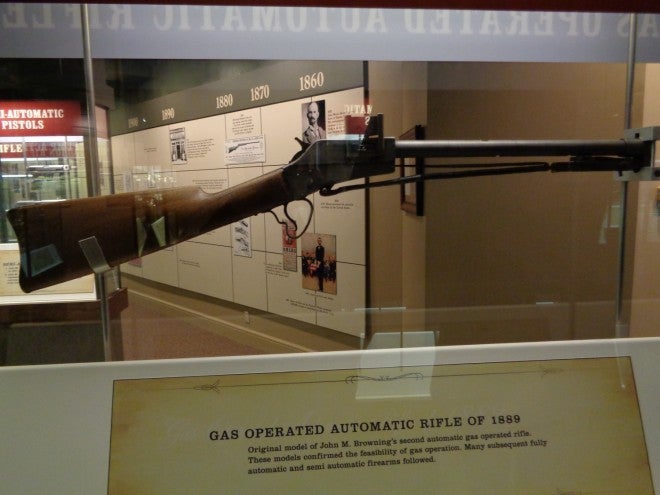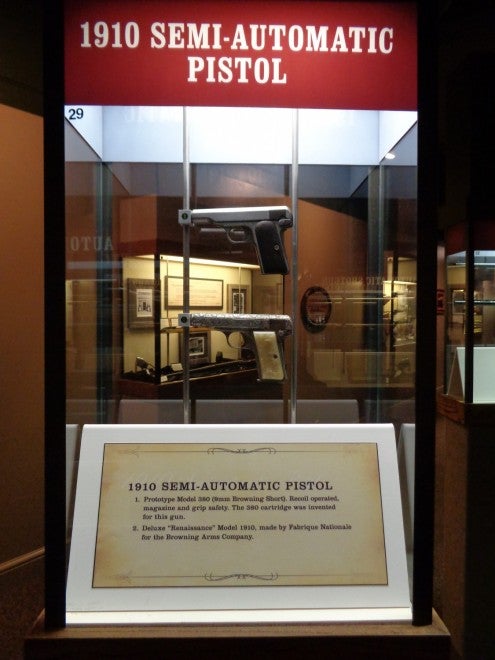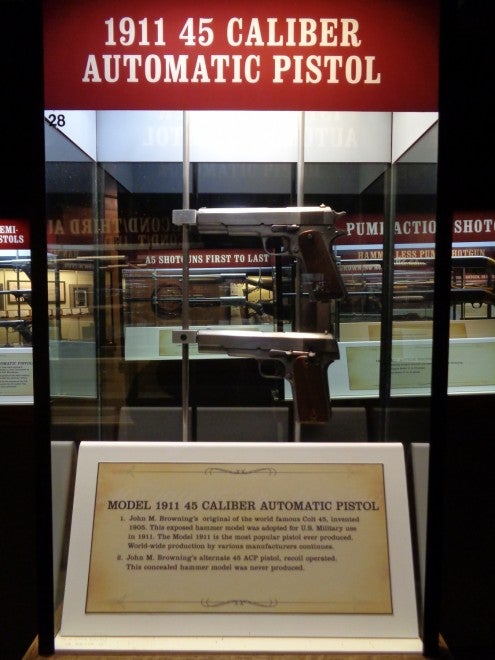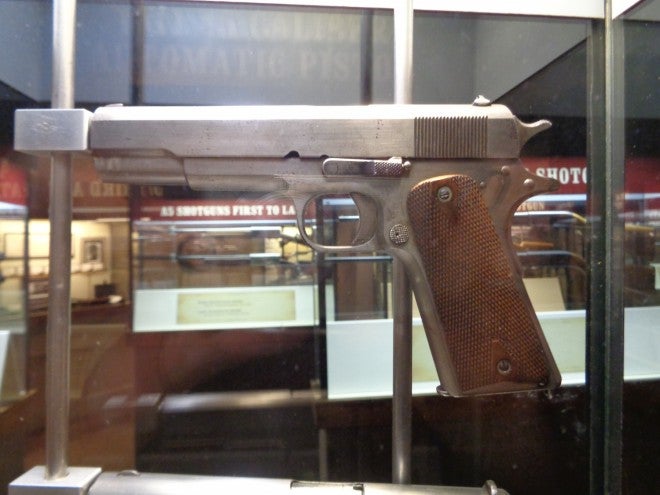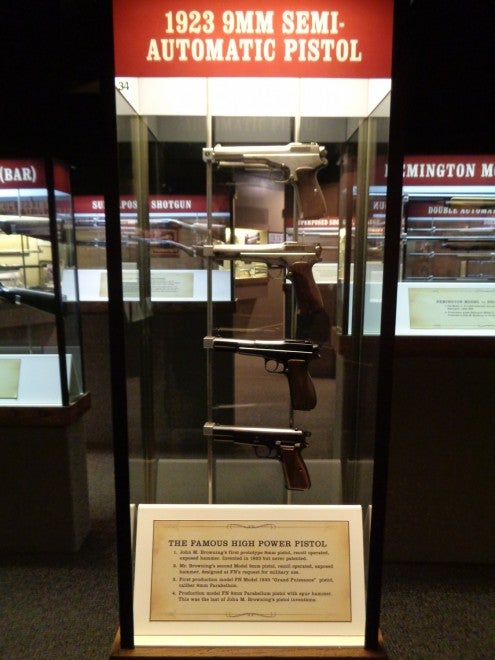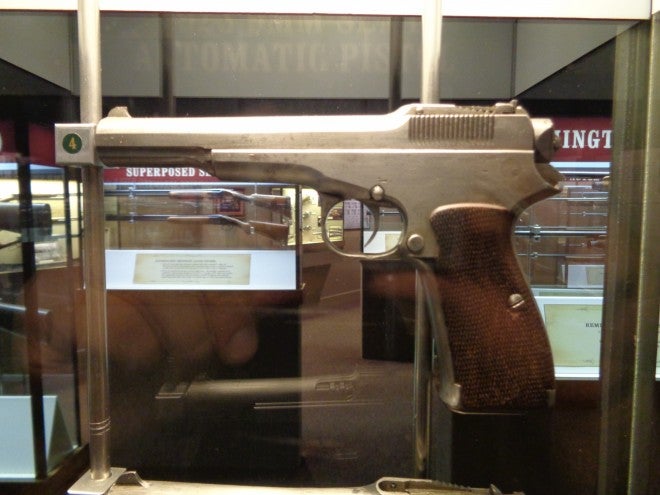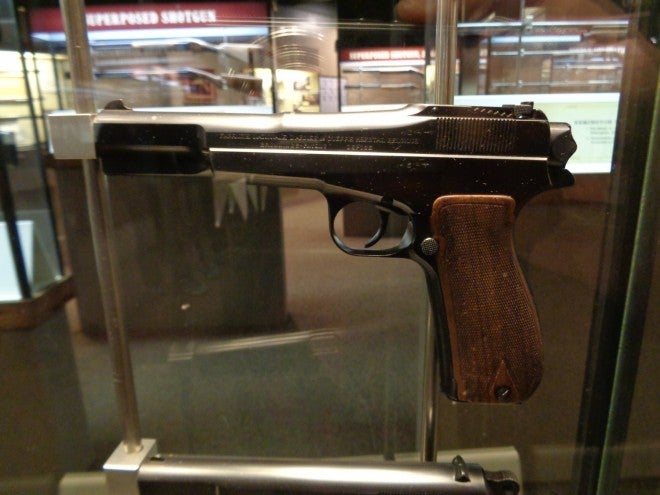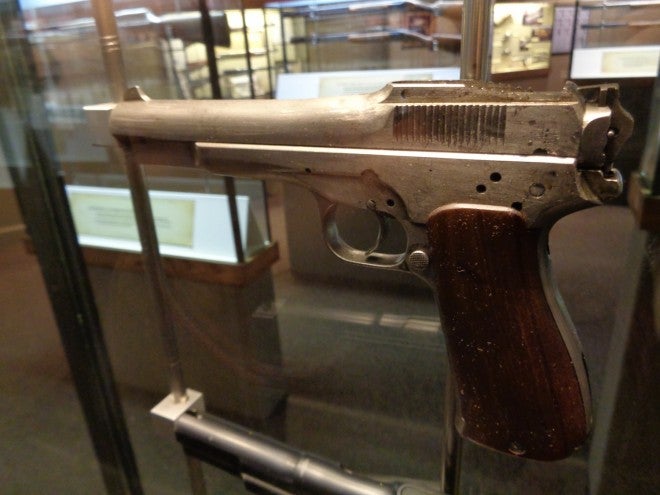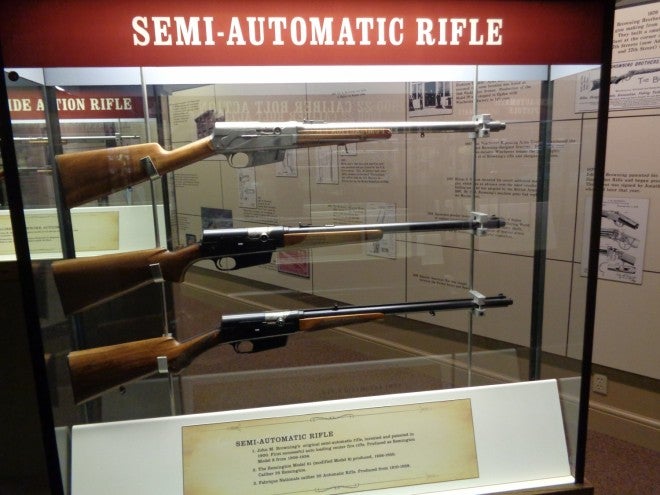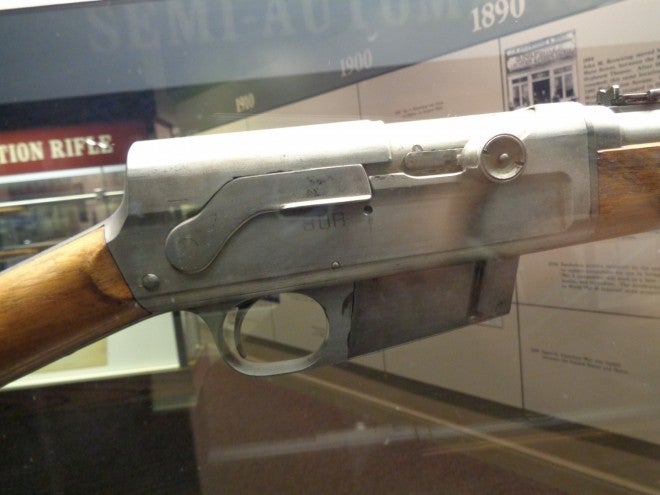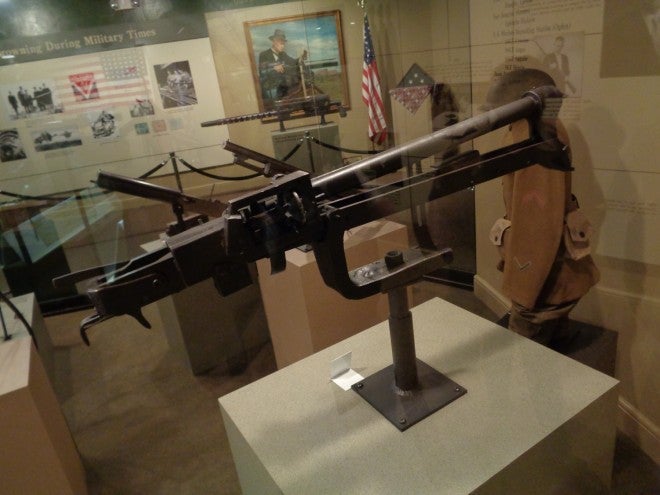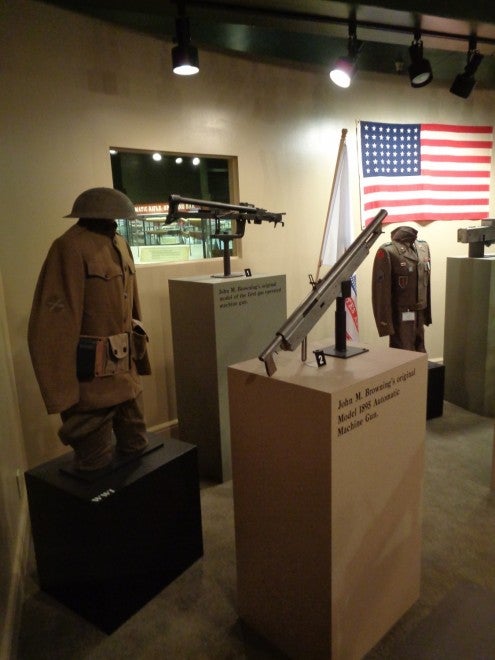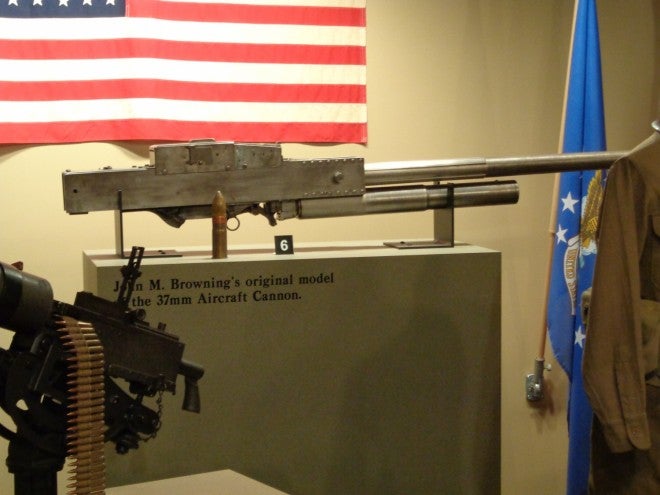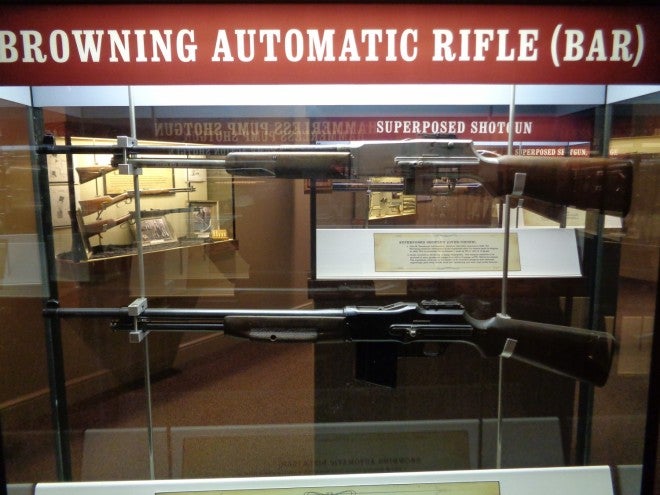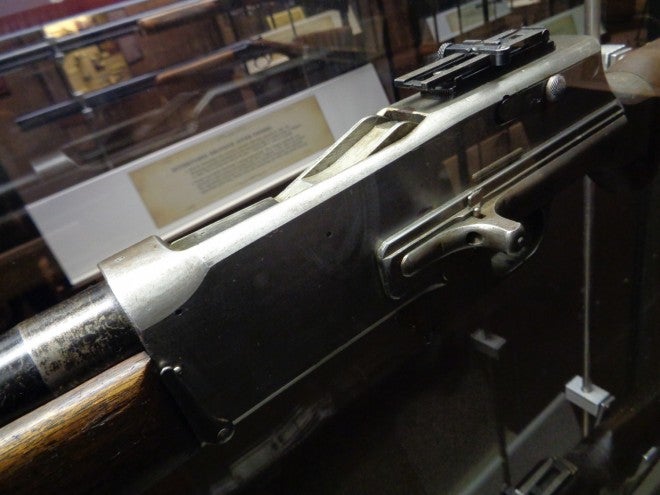Excluding the occasional gun hipster who throws out “Maxim!”, most gun hobbyists, when asked who the greatest firearms designer of all time was, will answer without hesitation, and with a tone of almost worshipful reverence “John Moses Browning”.
It’s difficult to argue with this. Others designed mechanisms more clever (Pedersen, for example), or laid more pivotal foundations for future work (e.g., Maxim), but none produced so many designs that dominated their respective competition for so long. Browning has not one, not two, not three, but many timeless classics to his name, including the M2 machine gun, the M1911 handgun, the FN M1905 “Baby Browning”, the FN Model 1910 (a handgun that, while less popular in the US, had an incredibly long production life at FN, only being discontinued in 1983, and that was the only single firearm to start a world war), the Browning Hi-Power, Winchester Model 1894, Browning Auto-5, and Ithaca 37.
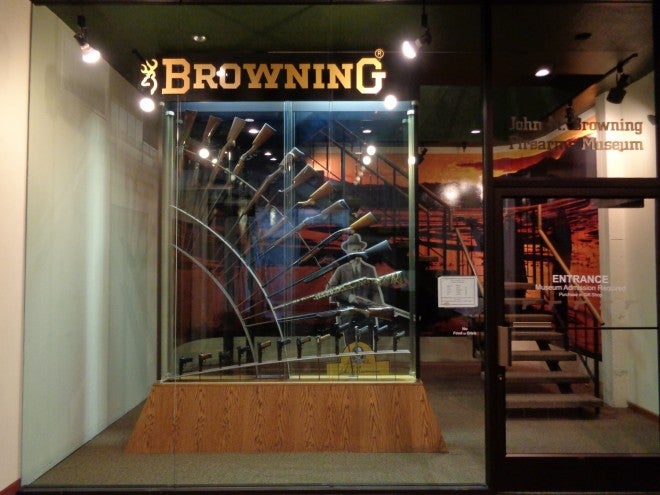
On display at the entrance were modern Browning products. Less interesting than what is contained inside, but still a very nice display.
It was therefore a real treat to tour the John M. Browning Firearms Museum in Ogden, UT, the place of Browning’s birth. The museum is small, and resides in he second floor of the old Ogden train station. The facade of the museum (itself also inside the train station – there is little indication from the outside that one of the most important pilgrimage sites for the shooting sports is there), is so adorned with modern products of the Browning Firearms company, that when I first poked my head up the twisted iron staircase, I became a little worried at the thought that the well-presented glass cases inside would only contain representative examples of Browning firearms, and not any historically relevant artifacts. Not helping this worry was the case of (functional) miniature firearms that, while neat, were not really what I came to the museum to see.
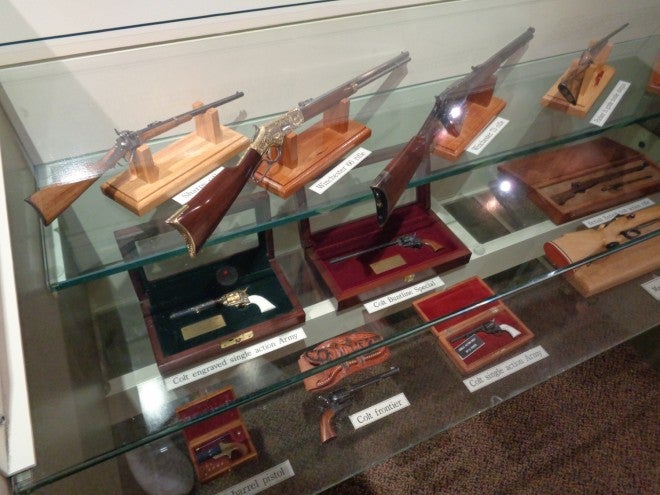
There was a multi-partition display containing many of the miniature firearms, including a .22 LR M1917 and a .38 Special M2 machine gun.
In the event, my fears were completely annihilated once I had reached the museum’s main display cases. These were full, yes, of representative production weapons designed by Browning, but above those in each case were original in-the-white Browning toolroom prototypes, which stood out as such due to the numerous corrected mistakes and visible file marks on each. The first on display was Browning’s 1878 single shot rifle,
Followed by a very interesting prototype Winchester 1895 lever action, in military drag:
Do the military stock and fittings of the toolroom prototype of the 1895 Winchester mean that the rifle was originally designed with military contracts in mind? The idea isn’t so far-fetched: 1895 “Muskets” would serve with the Imperial Russian Army in World War I. Browning himself didn’t seem to be fond of designing infantry rifles, which would make this prototype – if it was designed with the rifleman in mind – his sole contribution to the field.
Browning’s original gas-operated and blowback-operated pistol prototypes were also on display:
As were some of his early recoil-operated prototypes, including a rotating barrel weapon the existence of the patent for which I was aware. Seeing the gun in the, well, steel surprised me, however:
The pistol below is described in US patent 580,925. It is available here.
Browning’s FN Model 1900 prototype:
The Auto-5, which famously led to Browning’s schism with Winchester Repeating Arms Co, was not the first selfloading shotgun he designed. That distinction went to his toggle-locked 1900 design, which was not produced for fear of infringing on Borchardt’s toggle-locking patents:
The toggle-joint action can be seen in this close-up:
Also on display were the second and third prototype autoloading shotguns, the latter of which would be produced by FN Herstal as the Auto-5:
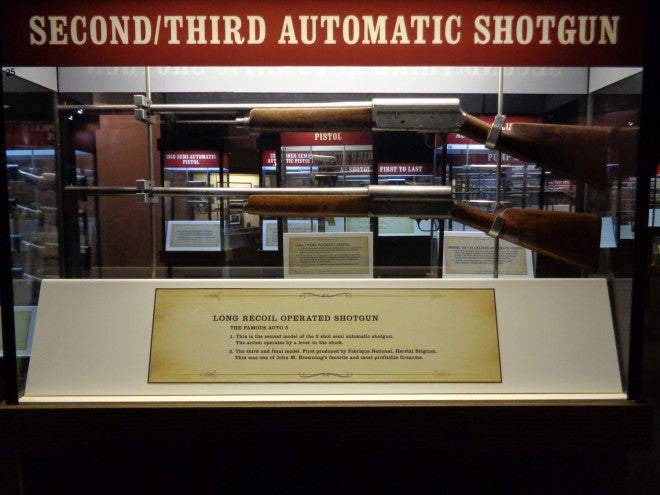
Possibly the most significant rifle on display: This is one of Browning’s original gas-operated rifle demonstrators. This rifle would form the basis for Browning’s Colt 1895 machine gun, as well as virtually every other gas-operated rifle from that point onward. While Browning was not necessarily the first to develop gas-operation (there were precedents in Europe), his work was by far the most influential.
The 1910 semiautomatic pistol, which is the only pistol credited with starting a World War, had its genesis in the prototype on display there:
The top handgun is the toolroom prototype of the “1910” model of pistol, which was the kind tested by the US Army in the 1910 trials, performing the feat of firing 6,000 rounds without parts breakage or malfunction. The bottom pistol is the “hammerless” model of the same:
The dramatic shift in design can be seen below. The top three handguns were designed by Browning before his death in 1926; the bottom handgun is a Hi-Power, finished by Browning’s protégé Dieudonné Saive:
The Browning prototypes are a fantastic example of Browning’s pragmatism in making toolroom models. The appearance and fineness of the pistols was no object – they simply had to work:
This example, in particular, had me absolutely fascinated. In the days before computer-aided drafting, pistols were born by hogging them out of metal with roughout files. Once one model was completed and fitted, its flaws became obvious, and once it outlived its usefulness – long before it was finished – it was set aside and a new block of steel was taken up:
Great Model Eight fans should of course take a pilgrimage to Ogden, to see the original Model 8 prototype:
The Model 8 would become a great influence on many significant designs in military selfloader history, including the M1 Garand and AK rifles:
This demonstrator, described in many books as “looking like the product of a blacksmith and his forge” entirely lived up to the reputation. John Browning’s earliest machine gun prototype, it was demonstrated to the US Army, but rejected:
Persistence, though, pays off. The 1895 Colt Machine Gun would later be adopted by the US Army as the first American military machine gun, the prototype for which was on display, as well:
Less well-known than his small arms are Browning’s contributions to aircraft guns. Here the toolroom prototype of the Browning 37mm aircraft cannon, variants of which would later arm P-39 Airacobras in WWII, sits on display below a 48-star American flag:
I couldn’t possibly cover every display at the museum in Ogden, so I will close out with this last prototype. The Browning Automatic Rifle, famous for arming US troops in WWI, WWII, and Korea, started life as a top-ejecting design. The distinctive “hump” of the weapon’s receiver was created by the locking shoulder for the pivoting locking block, and, originally, also formed the rear of the ejection port. The US Army did not like the ejection pattern of these initial weapons, and so the design was changed to the familiar side-ejecting type, but these prototypes still show the original configuration:
Visiting the Browning Firearms Museum was a real treat; the significance of their collection cannot be overstated. Many thanks to the folks at the museum for having me!
 Your Privacy Choices
Your Privacy Choices
